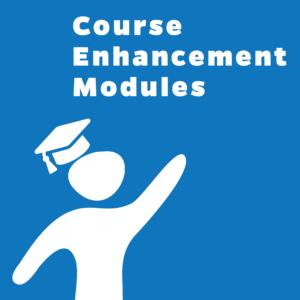Learning Resources
The Learning Resources portion of this CEM contains five parts:

Resources
Part 1: Introduction
This part introduces participants to the characteristics of successful schools, teachers, and students, describing the interrelationship between behavior and academics that makes addressing student behavior a crucial part of supporting learning. Behavior is explained in terms of its antecedents and consequences, setting the stage for matching function to intervention at all levels of support. This part also describes the wide variety of students who present with challenging behaviors, outcomes for students with disabilities, and real-life case studies.
Part 2: Universal Behavioral Interventions
This part introduces participants to the concept of universal behavioral interventions—supports for all students—in the context of multi-tiered systems of support such as Positive Behavior Interventions and Supports (PBIS). Universal supports include both schoolwide and classwide strategies. This is Part two of a five part Anchor Presentation that can be used in whole or in part. This portion contains a PowerPoint Presentation on Universal Behavioral Interventions. An instructor can download the PowerPoint and should use it in conjunction with the Facilitator’s Guide. Those participating in the class or PD session will need Handouts 3 and Handout 4 as shown in the Facilitation Guide.
Part 3: Supplemental Behavioral Interventions
This part introduces participants to the importance of implementing supplemental behavior interventions and using data to determine whether or not a particular behavioral intervention (or set of behavioral interventions) is working to improve student behavior. It includes descriptions of the distinguishing features of supplemental behavioral interventions and considerations for selecting and implementing evidence-based behavioral interventions that meet students’ needs, including detailed illustrations of how to effectively use two supplemental interventions, social skills training, and Check In/Check Out. This is Part three of a five part Anchor Presentation that can be used in whole or in part. This portion contains a PowerPoint Presentation on Supplemental Behavioral Interventions. An instructor can download the PowerPoint and should use it in conjunction with the Facilitator’s Guide. Aside from the presentation, those participating in the class or PD session will need:
- Handout 5: Four Steps in the Implementation Process
- Handout 6: Examples of Evidence-Based Behavior Curricula
- Handout 7: Examples of Evidence-Based Behavior Interventions
- Handout 8: Worksheet for Identifying Students for Check In/Check Out
Part 4: Identifying and Monitoring a Target Behavior for Intensive Intervention
This part introduces participants to techniques to identify and monitor target student behaviors over time as part of the process for implementing intensive behavioral interventions for non-responding students (i.e., those who do not respond to supplemental behavioral interventions). It introduces the concept of data-based individualization (DBI), a systematic method for using data to determine when and how to intensify behavioral interventions. Part 4 describes evidence-based strategies for gathering information on the behavior of non-responding students, identifying target behaviors for these students, and monitoring these students’ progress in improving their behavior after they receive individualized intensive behavioral interventions. This is part 4 of a 5 part Course Enhancement Module Learning Resource section. It can be used in whole or in part. A teacher or professional development practitioner can use the PowerPoint Presentation in conjunction with the Facilitation Guide in a course or PD session. Aside from the Powerpoint, students will need:
- Handout 9: Target Behavior Questionnaire
- Handout 10: ABC Anecdotal Report
- Handout 11: ABC Checklist
- Handout 12: Direct Behavior Rating Individualization Form
Part 5: Intensive Intervention
This part introduces participants to using a DBI approach to design and implement intensive behavioral interventions that accommodate the individual needs of non-responding students by addressing the underlying function of behavior. It describes how to conduct functional assessments to develop function-based interventions and includes considerations related to classroom culture, wraparound services, and strategies for documenting and evaluating the impact of intensive behavioral interventions. Part 5 concludes with an overview of U.S. Department of Education–recommended principles for restraining and secluding students whose behavior presents imminent danger of serious physical harm to themselves or other students and adults at school. Teachers and professional development providers should download the facilitator’s guide and powerpoint for use in their classroom or PD session. Students should have access to the following items:
- Handout 7: Examples of Evidence-Based Behavior Interventions
- Handout 13: Bob’s Target Behavior Questionnaire
- Handout 14: Functional Assessment Interview
- Handout 15: Function-Based Behavior Intervention Plan
- Handout 16: Function-Based Behavior Intervention Strategies



